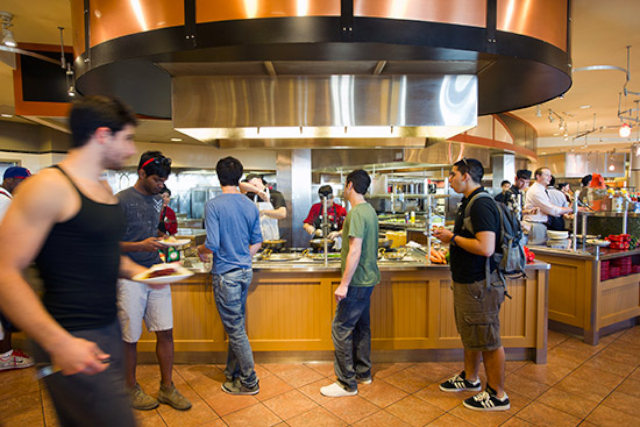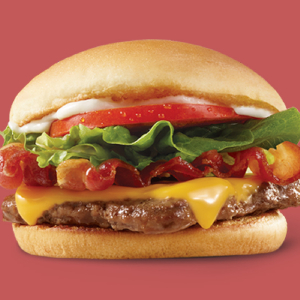It used to be that post-secondary students complained about rising tuition fees. Then they protested punishing student loan interest rates. Now, it appears that many kids will be forced to drop out of college or university by soaring meal plan fees…
 Typical college/university cafeteria. Food plan prices at UNB are set to soar…
Typical college/university cafeteria. Food plan prices at UNB are set to soar…
I remember, when I was in university, when the first mandatory meal plans came in. Before that, you could fend entirely for yourself food-wise and pay cash at the school’s cafeterias if you wanted what they were serving on a given day.
But it was costing the institutions too much to run the caffs. They had to provide food for the maximum number of kids who might choose to dine there. That led to financial losses and food waste (which, back then, was not a headline issue). So they made it mandatory for every student living in residence to buy a meal plan each semester. That at least stabilized the revenue stream.
Students got used to the idea of having to buy a meal plan after a few years. And a sort of uneasy peace descended on the caffs of higher ed.
Now, in the fact of rising food prices, the institutions are raising the price of meal plans. And students are expressing anger, dismay and all the other usual negative reactions. I can’t blame them, really.
Not a small adjustment
I suspect that the schools – some of them, anyway – held off raising meal plan prices as long as they could, then had to catch up. The result? At some institutions, like the University of New Brunswick, students will be paying over 60 percent more this coming year than they did before. What was $3,400 last spring will be $5,500 this fall.
Student Garret Oakes says his usual summer job on the family farm won’t come close to paying the increase.
Former plan fast, easy, simple
The rising cost of food and labour is reflected in the new price, said Sheldon MacLeod, associate vice-provost, student affairs and services.
The university is also dropping its pay-as-you-go options, which ranged from $1,000 to $3,400. Oakes says pay-as-you-go was his choice among former meal plans. It was also the fave when I was at at school. Cheap and very flexible.
When Oakes’ went to the caff, he’d swipe his card at the checkout and the cost of his food would be deducted from his account. Fast and simple.
Running out of credit
But MacLeod insists the changes were driven by student feedback and designed to improve food security.
One reason for the meal plan changes was that some students were eating themselves out of credits before the end of the semester. As a result, they would find it hard to eat enough, let alone eat right.
“At the end of the semester, we were having students who were either not eating as well, or they might not have access to money at the end of those semesters, when dollars get tight and the budgets are wearing thin,” MacLeod explains.
Now, it appears, the lack-of-access-to-money problem has just been shifted from the end of the semester to the beginning.
My take
It’s a classic disconnect between the administration and the proletariat. The bean counters are just doing what it takes to ‘correct’ the problems identified by the people at the top. The last thing on their minds is, “where will the kids get the extra money? Especially on such short notice for the fall term.?” No suggestions there, from MacLeod, alas.
~ Maggie J.

